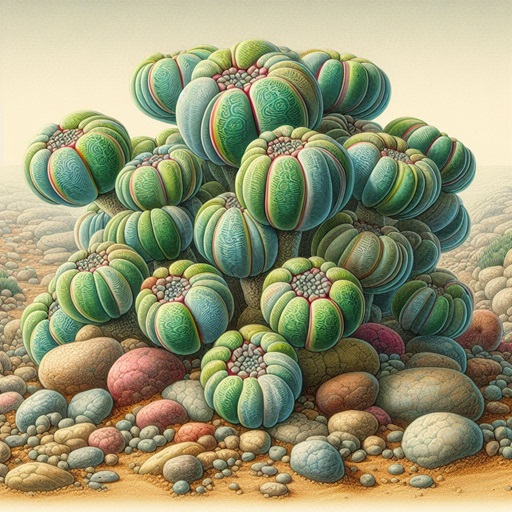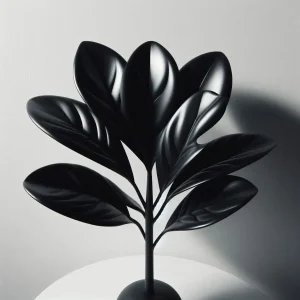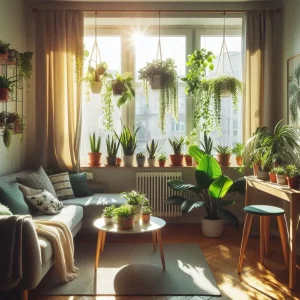| Topic | Description |
| Watering | |
| Importance of Drainage | Lithops require deep but infrequent watering. Proper drainage in the pot is essential to prevent root rot. |
| Watering in Growth Season | In spring and summer, when Lithops are actively growing, water thoroughly and allow the soil to dry completely between waterings. |
| Watering in Dormancy | In winter, minimize watering or stop entirely. |
| Soil | |
| Using Lithops-Specific Soil | A mixture of mineral soil with proper drainage is ideal for Lithops. |
| Importance of Soil pH | Soil should be slightly alkaline, with a pH between 7.0 to 8.0. |
| Light | |
| Need for Intense Light | Lithops require intense sunlight. A minimum of 4 to 6 hours of direct sunlight per day is ideal for growth. |
| Importance of Shade in High Heat | In hot areas, shade Lithops during the hottest hours of the day to prevent leaf burn. |
| Fertilization | |
| Low Fertilizer Needs | Lithops require minimal fertilizer. In spring or summer, you can fertilize them weakly once with specialized cactus fertilizer. |
| Propagation | |
| Propagation via Seeds | Propagating Lithops from seeds is relatively easy. Sow the seeds in spring in specialized seed soil and keep them moist until germination. |
| Propagation via Division | Lithops can be propagated by dividing large clumps in spring or summer. |
| Pests and Diseases | |
| Susceptibility to Mites | Lithops can be infested by mites. If signs of infestation are observed, use appropriate insecticides. |
| Root Rot | Root rot can occur due to overwatering. Proper drainage and correct watering are essential to prevent root rot. |
| Additional Notes | |
| Repotting | Lithops need to be repotted every two to three years. |
| Choosing a Suitable Pot | The pot should be large enough for roots to grow easily and have proper drainage. |
| Winter Dormancy | Lithops go into winter dormancy. During this time, minimize watering and place them in a cool, dark location. |
Conditions for Lithops Care(maintaining)
Page Contents
ToggleYou might find it interesting to know that this plant has various names, including living stones, stone plants, and pebble plants. In terms of appearance, it’s small, typically reaching about 2.5 cm above the soil. Normally, it has two leaves called cotyledons, which bear a striking resemblance to a fissured animal skin, colored in shades of green and brown with a hint of gray. It’s worth noting that this plant lacks a true stem and is mostly buried under the soil.
For Lithops or stone plants to thrive, it requires providing the necessary conditions for growth and cultivation in a home environment. The conditions for caring for (to maintain) Lithops include:
Placement
Lithops should be kept away from direct sunlight. However, it needs 3 to 5 hours of light during the day. Insufficient light will cause the plant to deteriorate, while excessive light will lead to sunburn. Therefore, light exposure for this plant should be balanced.
Suitable Soil
This succulent plant thrives in warm and dry regions with hot summers. Its soil consists of potting soil (and cactus soil) mixed with some sand. A crucial point in caring for Lithops is to allow the soil to completely dry out before watering. Thus, place the pot of this plant in front of sunlight as much as possible. Lithops can be propagated through root division and seeds.
Ideal Temperature for Lithops Care(maintenance)
This plant also thrives in cooler(low) temperatures ranging from 5 to 20 degrees Celsius. However, it goes dormant at higher temperatures.
Proper Watering for Lithops
Lithops require sufficient water starting from the beginning of autumn and during their flowering and pollination period. During the growth season, the plant needs regular watering, typically twice a week. However, it’s crucial to allow the soil to dry out completely between waterings. If the soil remains wet, the plant’s roots can rot, leading to its demise. Therefore, paying attention to Lithops care is essential. Additionally, if the plant’s leaves become wrinkled, avoid separating them by hand; let them naturally detach.
Before we introduce another important tip for taking care of Lithops, we invite you to also visit the article houseplants that grow in water.
Repotting Lithops
When the plant reaches maturity and has fully grown, it’s time to repot it. Typically, Lithops should be repotted once a year. Therefore, use a larger pot with greater depth. A critical point in repotting is to create several drainage holes at the bottom of the pot and place a layer of gravel to enhance soil drainage. Lithops prefer rich soil and proper drainage, so using cactus-specific soil is advisable. However, if you choose to prepare the soil yourself, consider a mixture of leaf mold, sand, garden soil, and perlite.
Closing Note
Lithops, with its stone-like appearance, is considered a decorative houseplant that adds beauty and interest to any home decor. It has two leaves called cotyledons, resembling fissured animal skin, colored in shades of green and brown with a hint of gray. Caring for Lithops involves placing it away from direct sunlight, although it requires 3 to 5 hours of light during the day. Insufficient light can cause the plant to deteriorate, while excessive light can lead to sunburn. Therefore, understanding how to care for Lithops is crucial for successfully cultivating this plant in your home environment.
FAQs
1.Where is the best place to put a Lithops plant in the house?
Placing this plant in front of a west, south, or east-facing window is ideal for receiving sufficient daylight during the day. The plant should receive 4 to 5 hours of sunlight during the day.
2.What should I do if I have trouble providing light to this plant at home?
To provide the necessary light to this plant, you can use special lamps.
3.How is (the) Lithops plant propagated?
Lithops can be propagated through stem cuttings and sowing seeds, although seed propagation takes longer to yield results.







